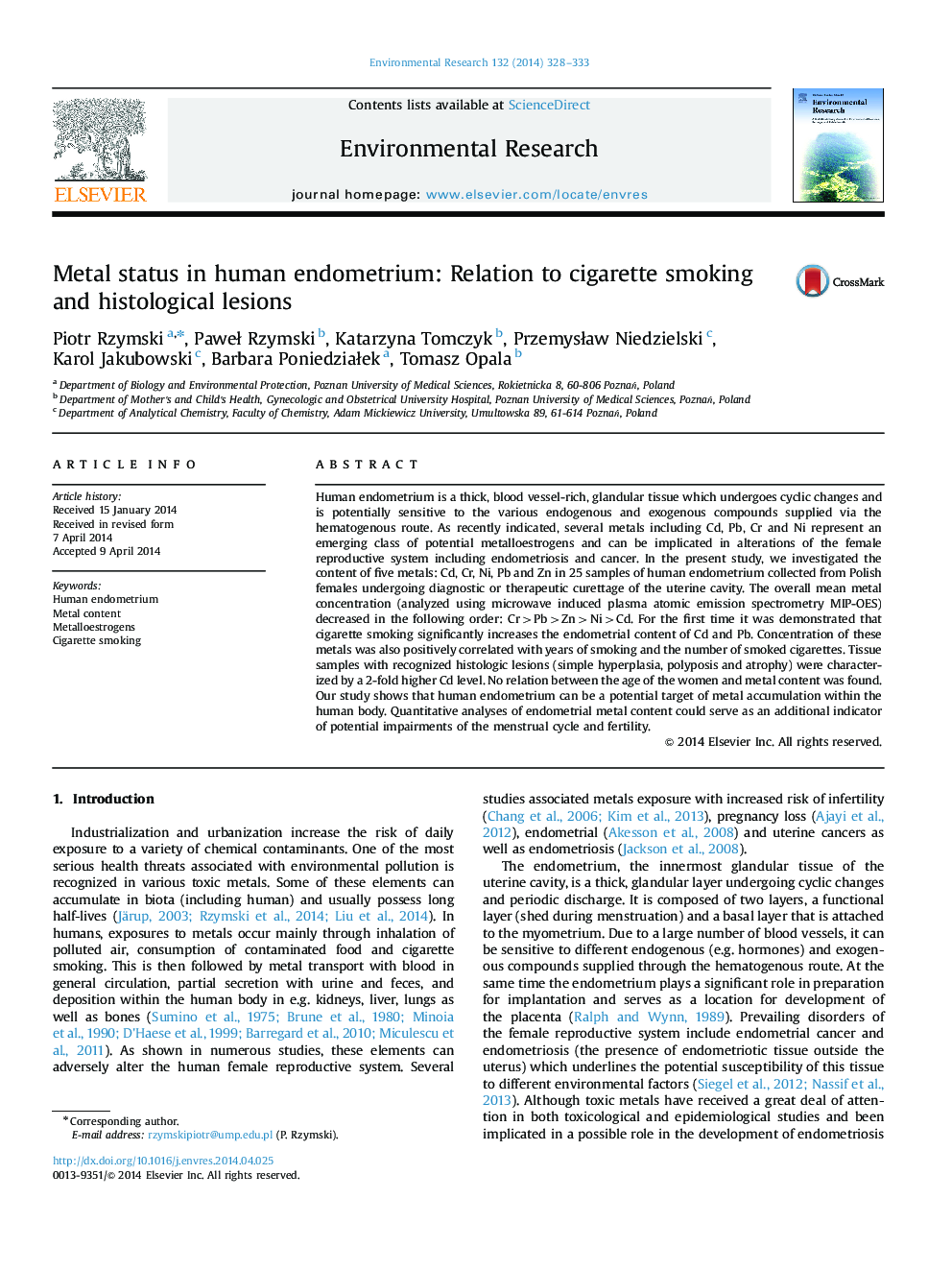| Article ID | Journal | Published Year | Pages | File Type |
|---|---|---|---|---|
| 6352995 | Environmental Research | 2014 | 6 Pages |
Abstract
Human endometrium is a thick, blood vessel-rich, glandular tissue which undergoes cyclic changes and is potentially sensitive to the various endogenous and exogenous compounds supplied via the hematogenous route. As recently indicated, several metals including Cd, Pb, Cr and Ni represent an emerging class of potential metalloestrogens and can be implicated in alterations of the female reproductive system including endometriosis and cancer. In the present study, we investigated the content of five metals: Cd, Cr, Ni, Pb and Zn in 25 samples of human endometrium collected from Polish females undergoing diagnostic or therapeutic curettage of the uterine cavity. The overall mean metal concentration (analyzed using microwave induced plasma atomic emission spectrometry MIP-OES) decreased in the following order: Cr>Pb>Zn>Ni>Cd. For the first time it was demonstrated that cigarette smoking significantly increases the endometrial content of Cd and Pb. Concentration of these metals was also positively correlated with years of smoking and the number of smoked cigarettes. Tissue samples with recognized histologic lesions (simple hyperplasia, polyposis and atrophy) were characterized by a 2-fold higher Cd level. No relation between the age of the women and metal content was found. Our study shows that human endometrium can be a potential target of metal accumulation within the human body. Quantitative analyses of endometrial metal content could serve as an additional indicator of potential impairments of the menstrual cycle and fertility.
Related Topics
Life Sciences
Environmental Science
Health, Toxicology and Mutagenesis
Authors
Piotr Rzymski, PaweÅ Rzymski, Katarzyna Tomczyk, PrzemysÅaw Niedzielski, Karol Jakubowski, Barbara PoniedziaÅek, Tomasz Opala,
